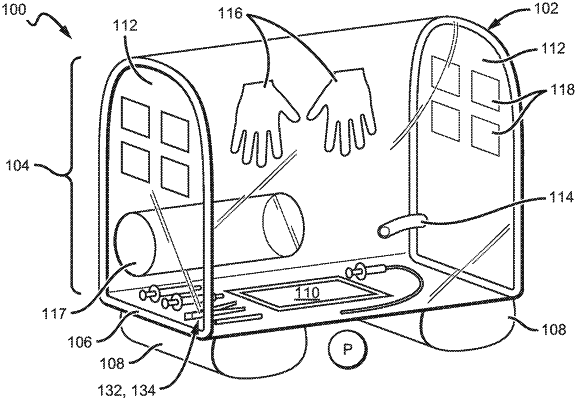| CPC A61G 10/005 (2013.01) [A61B 42/10 (2016.02); A61B 90/40 (2016.02); A61G 10/023 (2013.01); A61B 2046/205 (2016.02); A61B 2090/401 (2016.02)] | 14 Claims |

|
1. A sterile environment system, comprising:
an enclosure having a barrier separating a sterile environment inside of the enclosure from a non-sterile environment outside of the enclosure, the barrier comprising:
an expandable portion configured to expand from an unexpanded state to an expanded state for working within the sterile environment; and
a patient-interfacing portion including a fenestration configured for placement directly over an area of interest of a patient, the fenestration having a sealed state and an unsealed state for access to the area of interest from within the sterile environment; and
a support system coupled to the patient-interfacing portion of the barrier such that the support system is positioned on at least opposite sides of the fenestration, the support system configured to support the enclosure on a surface when placed over a region of the patient positioned on the surface, wherein the region of the patient includes the area of interest.
|